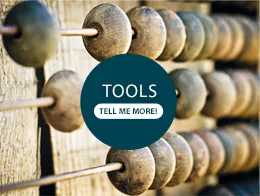When Net Impact CEO Liz Maw attended Columbia Business School in the early 2000s, the school’s Net Impact club had four or five people in it. The nonprofit’s goal—getting young professionals to use their careers to serve society and the environment—seemed sort of foreign at the time.
Maw’s peers had no idea how to react to her desire to change the world through business. “They didn’t really get it,” recalls Maw, who used her MBA to work for a couple of years in non-profit consulting with the Bridgespan Group. “They thought I was being nice or something.”
But in 2004, the year Maw took on her current role as head of the organization, Columbia made a massive leap: It hosted Net Impact’s annual conference. “It was a huge groundswell of change at that school,” she says. Nowadays, Columbia has its own social enterprise conference with a snazzy website and an attendance of roughly 700. And Columbia’s not alone in that regard: Every top business school in the country has put resources into the intersection of business and positive change—or at least paid lip service to the idea.
Maw’s job effectively makes her one of the faces of the student movement for business-led impact. Though she’s been out of school for a long time, Net Impact isn’t short on Millennial staffers, many of whom have recently graduated from Ivy Leagues and well-regarded California public schools (the organization is based in San Francisco); Maw has a relaxed, genial rapport with them, at one point noting that she and two other staffers own the same top. Nonetheless, her job involves a lot of high-level thinking about where the movement is going and how Net Impact can best push it along.
Now that social enterprise is such a hot topic, being a do-gooding MBA no longer makes you a weirdo. How should you navigate this brave new world? In a wide-ranging interview, Maw advises students on how to pick the right schools, how to turn any job into an impact job, and how to differentiate the companies that really care from the ones that just look cool.
Open All Close AllWe’ve grown quite a bit. We have 300 chapters now, and when I started, we had around 80. Our budget has also grown. That, I think, is reflective of the increased interest in doing good with your career and in the intersection of business and sustainability. I’ve been so fortunate to be here during this time of dynamism in the field.
Ten years ago, the conversation was much more simplistic. It used to be that being a do-gooding MBA it was all about joining alternative companies like The Body Shop or Ben & Jerry’s. But in the past 10 years, more mainstream companies like Unilever and 3M have taken a public stand about incorporating values and sustainability into the core of their DNA. There are just a lot more opportunities now.
My days are very varied. A lot of what I do is build external relationships. Sometimes that’s for fundraising purposes, and other times it’s more about making strategic partnerships or working with our board of directors. I spend quite a bit of time meeting with people and traveling to conferences. I focus on spreading our message and our story, so I work with my team on figuring out where we should be speaking and where we should be blogging.
I also do a lot of work on strategy: thinking about how we can be more effective, how we can grow, and how we can scale to the next level of impact. That part of my job involves a lot of problem-solving meetings. We try to look at the immediate fires that need to be put out while focusing at least six to 12 months ahead and thinking about what the opportunities are going forward.
There are a lot of folks playing with legal structures in a way that’s really interesting and further merging nonprofits and for-profits. People are starting new legal structures—like the whole benefit corporation concept in California—so a company can be for-profit but have a social mission as a very important part of its DNA. It used to be that nonprofits had the mission people and the non-money people, and for-profits had the opposite. But now you see a real merging of all skill sets and values in a way that I think is really exciting and transformative.
This sounds soft, but it’s about the inspiration and the sense of possibility. Even today, when social enterprise and related topics are more discussed in business schools, you’re still a minority in the vast majority of business schools if you want your career to have a positive social or environmental impact. When students come to our annual conference, they see 2,500 people who all want to use their business skills to change the world, and that gives them a sense of possibility, a sense that they’re not outliers and that there is a real movement going on that will transform the way we all work. That’s very inspiring to students.
Now, of course, as an organization, we want to do more than inspire—we want to enable students to create change—so we’ve developed a number of tools via our chapters and our own website to help them take that next path in their professional development, whether that’s building new skills or finding a new job or creating a network. Those more tangible, tactical elements have been valuable, too.
We’ve played a thought leadership role on the opinions and wants of young people. We help represent what they’re demanding from their current and future employers in a way that makes companies really listen. It’s been exciting to see that when we do research or bring other stories to light, companies want to know what Millennials want from their jobs, and we’re hoping our work will help companies evolve in ways that enable more people to bring their values to the workplace.
A lot of schools have invested in centers on this topic, which I think really helps take things to the next level. Haas has a center for corporate responsibility, Cornell has a great center for sustainable enterprise, UNC has a center—there’s a group of schools that have centers, and they are able to do much more in terms of curricular change and extracurriculars than the other schools.
If I were a student looking at business schools, I would look at our Business as UNusual guide, and I would look at schools that have invested in centers and endowed faculty on the topic that I’m most interested in, whether that’s nonprofits or social enterprise or sustainability.
It’s very hard to drive change in universities for several reasons, one of which is the way faculty are tenured. Even if the dean has really bought into change and the students want change, there’s no leverage to force faculty to change. I think that the newer programs like the Presidio Graduate School and the Bainbridge Graduate Institute—who didn’t have to deal with changing tenured faculty—were able to innovate a lot more quickly than some of the established programs like Harvard and Wharton. That said, some of those programs, like Stanford and Haas, have had huge commitments to social enterprise for a long time, so they don’t have to change that much in some ways.
One way to change a business school is to add tons of new electives on social entrepreneurship, impact investing, clean energy, and so on. But not everybody would take them, right? Change the core curriculum by adding in new cases and new themes that relate to ethics, social value, and all that kind of stuff—that, I think, is the dream, because you want everyone who comes through business school to think about business as a tool for good, not just a tool for profit. But that’s what’s really hard to change, because you have tenured faculty teaching the core curriculum, and they’ve often been doing this for a long time. I think the pace of change in the core curriculum is probably slower than any of us would like to see.
Well, let’s see if I can answer this question without generalizing about Millennials. I think we’re slowly becoming a more enlightened society, and folks are realizing that you can have your cake and eat it too—meaning, you can have an interesting job that pays a decent salary and bring your personal values to work. It used to be that you would work from nine to five and do your volunteering on the weekend or in the nighttime, but now, there’s more flexibility on the job, so there’s not this barrier between work and life. And part of that is having a job that reflects your personal values.
Climate change has also been a huge factor. There are many conservative businesspeople who now get that this is a real threat, not just to the planet but to their business needs. You can’t run some of these companies without water and without sustainable sources of energy. All kinds of companies are acknowledging the threat and figuring out how to create sustainable strategies.
We had a debate, actually, about how you define an impact job, and we did land on language that was about making a social or environmental impact versus a more broad, “I’m making the world a better place” impact. You could basically argue that anything makes the world a better place.
I guess Facebook is saying it’s changing the world through its core product, through helping people be more transparent and communicate with each other and all that. But that doesn’t mean the company is good for the environment or that it’s working on social justice issues, right? So you have to decide if connecting people is what you’re passionate about. If that’s the case, you should go work for Facebook. But if you’re passionate about these other issues, you can’t just give Facebook an environmental or social halo.
There has definitely been research on Apple showing that people just assume it’s a green company because they think it’s cool, which is not true. No one—employees, potential employees, consumers—should be that simple-minded about it. In my opinion, you should decide what you care about and what you’ll take a stand on, and not work for a company unless it meets those values.
There are certainly a lot more opportunities than there were five years ago. The clean energy sector has exploded, and the whole impact investing field is really growing—there are a bunch of niche fields that were tiny and are now expanding. There are also people starting social enterprises, and those people are hiring people.
That’s not to say it’s easy to find those jobs. You have to be a self-starter, and you have to be ready to network and put yourself out there. You have to be confident and sort of wait past the on-campus recruiting cycle in the fall of your second year and then do an independent job search, because most people don’t hire seven months before they need someone. That’s a challenge a lot of students have: “I’ve got loans. Can I really just not find a job that’s guaranteed?” But there are many examples of students holding out and finding jobs that they just adore.
I met with a former vice president, Heather Dietz, two days ago. She now works for Interface’s innovation department, and she’s involved in an awesome project to get fishing nets out of the ocean. She’s helping lead a really cool multi-organizational partnership between her company, NGOs, and others to recycle those nets into carpet. That’s one example.
Another kind of poster child for us is Seth Goldman. He founded Honest Tea—with his business school professor–in fact, as a recent Yale School of Management alum, and now it’s a huge success story. It’s a wonderful example of a triple bottom line company: Honest Tea makes a great, healthy product using fair trade and sustainable sourcing practices.
A snapshot of the Net Impact membership: About a third of our members go into traditional for-profit business, and within that group, half the members take on positions related to corporate social responsibility. A fourth of our members go into nonprofits. 16% go to self-defined mission-driven businesses, so companies like Patagonia or Stonyfield. 11% are self-employed, 8% are in government, and 8% are unemployed.
First, I wouldn’t give up just because you have debt. You don’t have to take a humongous pay cut to make an impact. You can find a well-paying job that makes a positive difference if you’re willing to put the time in. You’re probably not going to earn crazy, crazy money, but you can certainly earn enough to be comfortable and pay off your debt.
Second, there’s opportunity to take any job and try to bring your values to it. It’s not always easy to do, but focusing on doing great at your core job and then doing sustainability projects on the side is certainly a route to sustainability leadership. A lot of people I know started in mainstream, corporate jobs, and then did side projects related to sustainability or corporate social responsibility (CSR). That allowed them to move into CSR-type roles.
On our website, we actually have a resource called the corporate interview toolkit, and it’s designed to help people research and ask the right questions when they’re interviewing with mainstream corporations. The goal is to identify which companies really allow you to bring your values to work. There are also a lot of rankings out there—like the Dow Jones Sustainability Index—which you could use to see how companies measure up to one another. If you work for a Unilever or 3M versus, say, a Facebook or Apple, you’ll be much more likely to be able to be a part of a values-driven culture where the opportunities are more widespread.
I think Net Impact’s in a really exciting point in our history. We’re ready as an organization to reinvent ourselves for the future. I’m hoping we do that by growing significantly and attracting more members—not just MBAs, but also undergrads and other kinds of graduate students. Diverse growth is a big goal for us: We’re especially interested in increasing our racial diversity, and perhaps in working with students from community colleges to increase our socioeconomic diversity.
In addition to growth, we’re looking at the quality of our programs. We believe there’s more we can do to support young people who want to change the world. We have been piloting and scaling some really great programs over the past few years, and I’m hoping we can figure out how to scale those more, so instead of having a couple hundred students participating every year, we can have thousands of students.
Another goal is blowing our amazing Net Impact Conference (which will be held Nov. 6-8 in Minneapolis this year) out of the water. About 2,500 people participate, and we’ve been thinking about how we can have 10,000 people participate in a few years.
The field looks pretty different than it looked 10 or 20 years ago, so it’s not enough just to have been around for a while. No one can rest on their laurels in this day and age. I’m very interested in figuring out what we can do to shake things up and catalyze more and more people than ever before. Is that through better use of technology? Is that through partnerships? Is that through offering more value to our students? Choosing which path to follow will be the biggest opportunity and challenge.



